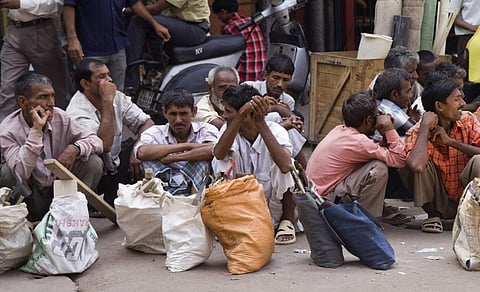

Global unemployment is projected to stand at 207 million in 2022. This is 21 million more than in 2019 before the novel coronavirus disease (COVID-19) pandemic began, according to the ILO World Employment and Social Outlook – Trends 2022.
Global working hours in 2022 will be almost two per cent below their pre-pandemic level — that is equivalent to the loss of 52 million full-time jobs. This deficit is twice as large as the ILO’s forecast in May last year, according to the Outlook released by the ILO January 17, 2022.
The downgrade in the 2022 forecast reflects the impact of ever new variants of COVID-19 on the world of work, according to the Outlook.
It is estimated that in 2022 around 40 million people will no longer be participating in the global labour force.
The Outlook remains fragile because the future path of the pandemic remains uncertain. Also, wider economic risks such as accelerating inflation may come into play. Labour market prospects are uneven across the globe.
The pandemic has pushed millions of children into poverty. It is estimated that in 2020, an additional 30 million adults fell into extreme poverty (living on less than $1.90 per day in purchasing power parity) while being out of paid work.
The number of extreme working poor — workers who do not earn enough through their work to keep themselves and their families above the poverty line — rose by eight million.
Many low and middle-income countries have low access to vaccines and limited scope to expand government budgets to address the crisis.
Thus, these countries are struggling more than high-income ones to get back to pre-pandemic levels of employment and job quality.
Key labour market indicators in all regions — Africa, the Americas, the Arab States, Asia and the Pacific, and Europe and Central Asia — have yet to return to pre-pandemic levels.
All regions face severe downside risks to their labour market recovery that stem from the ongoing impact of the pandemic. The outlook is the most negative for Latin America and the Caribbean and for southeast Asia.
Some sectors, such as travel and tourism have been particularly hard hit, while other sectors such as those related to information technology have thrived.
Women have been worse hit by the labour market crisis than men and this is likely to continue. The closing of education and training institutions will have long-term implications for young people, particularly those without internet access.
Many temporary workers lost their jobs at the start of the crisis. However, many new temporary jobs have also been created since.
There is the need for a broad-based labour market recovery — the recovery must be human-centred, inclusive, sustainable and resilient.
Guy Ryder, ILO director-general, said: “There can be no real recovery from this pandemic without a broad-based labour market recovery. And to be sustainable, this recovery must be based on the principles of decent work — including health and safety, equity, social protection and social dialogue.”